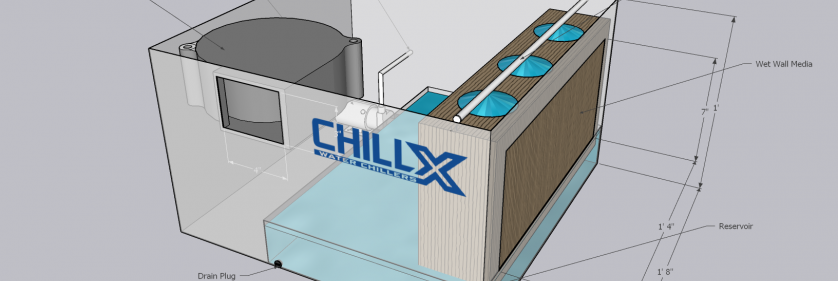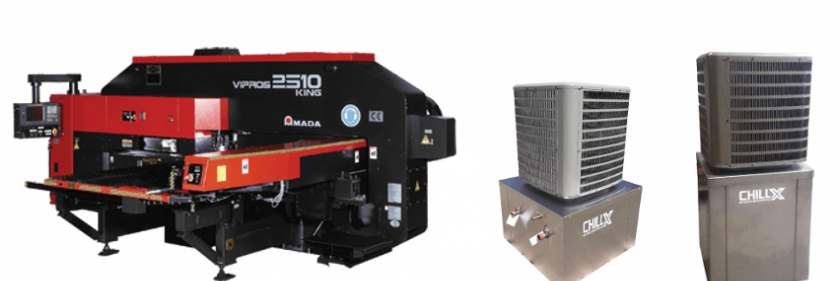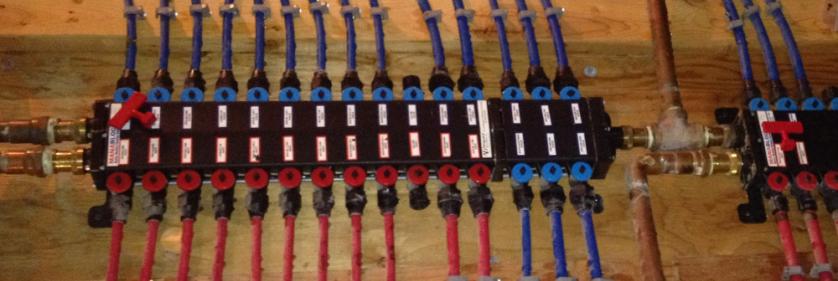Propylene Glycol (PG) is the preferred and most common heat transfer fluid additive used in hydronic heating and cooling applications. It’s ubiquity makes it's cost and availability attractive in comparison to other engineered fluids. And the fact that it’s “non-toxic” makes it a relatively safe choice for most applications, including for food production, food processing, and food service.
While there are conflicting views on the long term compatibility of propylene glycol with certain materials, namely with plastic compounds like PVC & CPVC, PG is still likely to be the best option all... + continue reading
Our Blog
Wednesday, May 20, 2020 - 11:31
A customer reached out to us recently with an unusual request: how might the Ice Box air-to-water heat exchangers be used to cool a camper van? The implication was to find a way to cool a small space using a minimal amount of electricity at a remote location.
If your unfamiliar with the Ice Boxes, they're very small air-to-water heat exchangers with small 3/8" connections and a convenient plastic flange/housing for easy connection to existing duct-work. So, in this situation, the customer might install the Ice Box into existing duct-work of his camper van which would take advantage of the... + continue reading
Sunday, March 29, 2020 - 16:51
What is PEX pipe?
PEX is a cross-linked plastic (polyethylene) material manufactured with softer, and more flexible characteristics. It's been used in potable water and many other manufacturing applications all over the world since the 1960's, and gained significant traction in Europe in the 1980's. It's only somewhat recently caught on in the US, but is largely replacing more traditional piping materials in new construction and renovation projects.
PEX pipe comes in many permutations, with numerous diameters, and versions with specialized layers for different applications, eg: PEX-Al-PEX,... + continue reading
Monday, March 9, 2020 - 15:11
ChillX offers a few chiller designs that make for nice drop-in replacements for the OEM SBC ex 3.0, ex 5.5, and larger chillers. Our standard Low Profile Low Temp chillers offer very nearly the same performance and flow specs to the SBC chillers, but at a better price point.
Details on our Low Profile Low Temp chillers can be found on our website, or as always, please feel free to reach out any time by phone or by e-mail -- we're always happy to help!
Amada Vipros Installation Guide Recommendations:
Vipros Machine
Recommended SBC Chiller
Chiller Capacity (@ 65F... + continue reading
Friday, March 6, 2020 - 12:57
There are at least few times you may need to add glycol to your chilled water system, but most commonly:
during install
topping off the tank after a fluid leak
refilling the tank after a flush
If you're confident the glycol you have is mixed as indicated by the label this is a pretty simple math problem. However, if you're adding glycol to your chiller system with a new/different glycol mix it's advisable to use a refractometer to directly measure just how much glycol is in your system. This is necessary to be sure it's freeze protected to the extent you require. Keep in mind... + continue reading
Sunday, November 27, 2016 - 22:12
Did you know water chillers are cheaper to purchase and install than traditional A/C units? They can also cut your energy bill in half.
When considering options for cooling your high-priority environment, there are a number of reasons for choosing traditional A/C service. Afterall, traditional A/C manufacturers and technicians have reputations for consistency after decades of reliable service. Why would you go with someone else?
It turns out that traditional A/C is not the only way to cool your space. Cooling with a water chiller offers advantages you will never get any other way. Here... + continue reading
Wednesday, August 24, 2016 - 11:46
IMPORTANT DISCLAIMER
PEX is an excellent product when used properly.
Neither ChillX Chillers, Chillking Chillers, Inc. nor their agents, employees or any other persons acting on its behalf, makes any warranty, express or implied, with respect to the use of any information, apparatus, method or process disclosed in this publication or that such use may not infringe privately owned rights, or assumes any liabilities with respect to the use of, or for damages resulting from the use of, any information, apparatus, method or process disclosed in this publication or is responsible for... + continue reading




